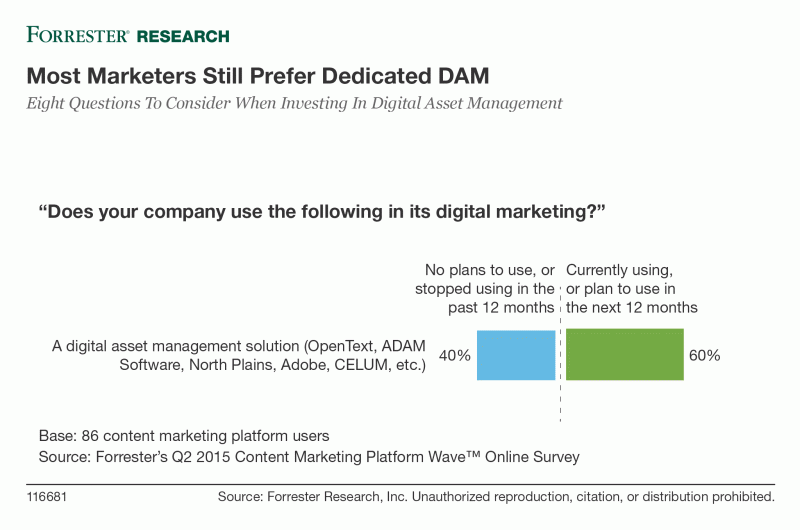Don’t Be Fooled — DAM Is Still Relevant
If you think digital asset management solutions are a relic of the past or a graveyard of static assets then you’re dead wrong. While complementary technologies like web content management, content marketing platforms, and product information management offer DAM-like capabilities, most marketers still prefer to use a dedicated DAM.

But how do you determine if you need a dedicated DAM or if you can use adjacent technologies to store your rich media assets? That’s exactly what we answer in Eight Questions To Consider When Investing In Digital Asset Management.
Keep in mind these key considerations when weighing a DAM investment:
- DAM can serve as the central hub for your content. DAM solutions of today sit squarely between upstream creative workflows and downstream delivery mechanisms. If you have multiple systems that need to access rich media content, a dedicated DAM is the core repository that serves that content into a presentation layer.
- DAM supports complex workflows and multiple stakeholders. DAM systems have integrated components of marketing resource management (MRM) technologies around planning and allocation of resources. DAM allows your team to pass around an asset for creative and legal approval. Each stakeholder can annotate assets and review iterations before creative teams finalize assets.
- DAM saves money and headaches around content usage. Standalone DAM systems allow you to manage the usage rights of assets. That means large organizations can avoid violating copyright and usage guidelines around content. One firm told us that it saved $3 million because its DAM helped them avoid violating image licenses.
How are you using DAM? Comment below or find me on Twitter.
